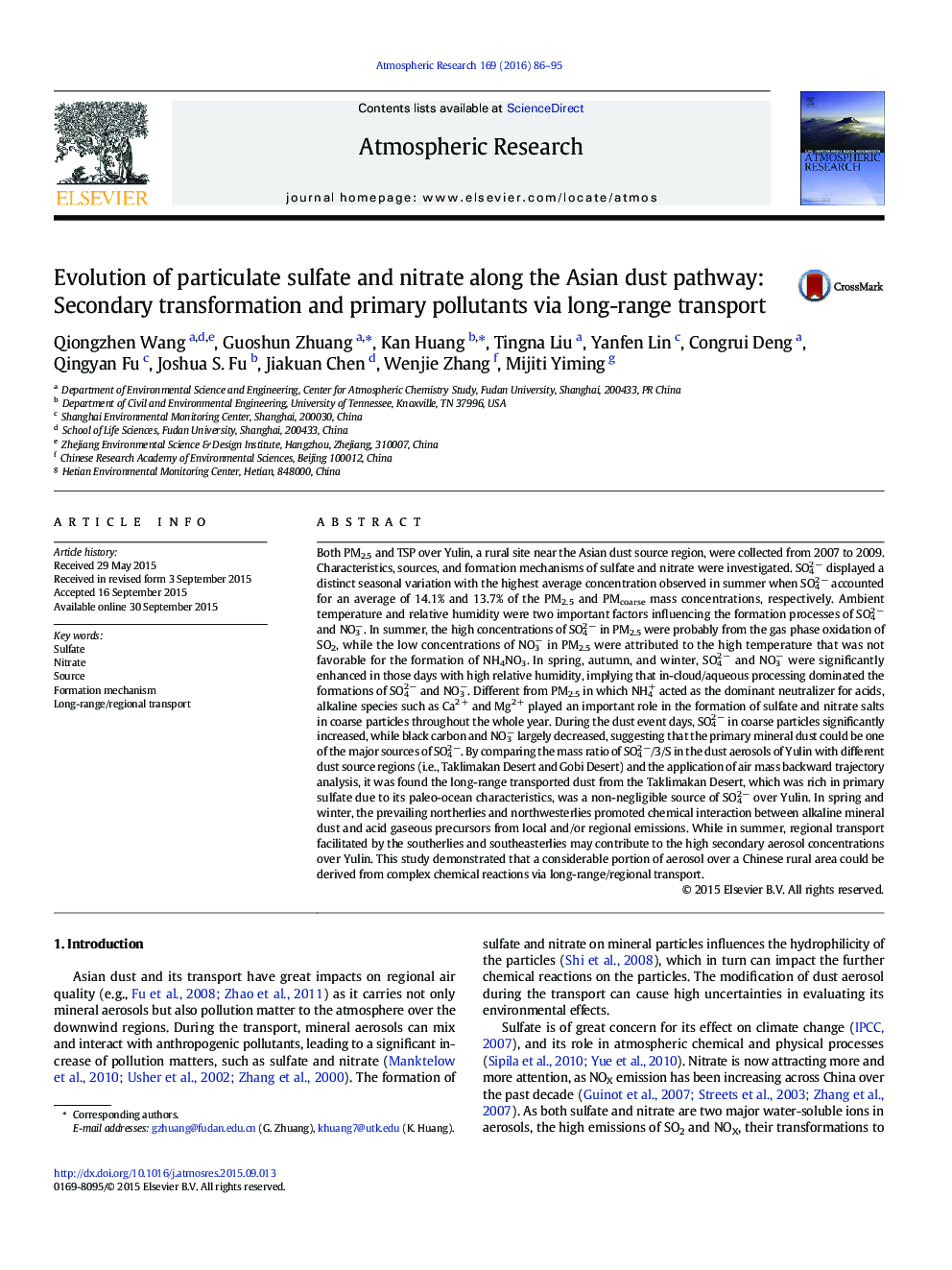| کد مقاله | کد نشریه | سال انتشار | مقاله انگلیسی | نسخه تمام متن |
|---|---|---|---|---|
| 4449689 | 1311647 | 2016 | 10 صفحه PDF | دانلود رایگان |
• We explore the sources and formations of SO42 − and NO3− on the pathway of Asian dust.
• Enhanced gas phase oxidation of SO2 leads to highest SO42 − loading in PM2.5 in summer.
• Enhanced coarse SO42 − and NO3− are from heterogeneous reactions on crustal particles.
• Primary paleo-ocean sulfate from Taklimakan Desert contributes to Yulin's aerosol.
Both PM2.5 and TSP over Yulin, a rural site near the Asian dust source region, were collected from 2007 to 2009. Characteristics, sources, and formation mechanisms of sulfate and nitrate were investigated. SO42 − displayed a distinct seasonal variation with the highest average concentration observed in summer when SO42 − accounted for an average of 14.1% and 13.7% of the PM2.5 and PMcoarse mass concentrations, respectively. Ambient temperature and relative humidity were two important factors influencing the formation processes of SO42 − and NO3−. In summer, the high concentrations of SO42 − in PM2.5 were probably from the gas phase oxidation of SO2, while the low concentrations of NO3− in PM2.5 were attributed to the high temperature that was not favorable for the formation of NH4NO3. In spring, autumn, and winter, SO42 − and NO3− were significantly enhanced in those days with high relative humidity, implying that in-cloud/aqueous processing dominated the formations of SO42 − and NO3−. Different from PM2.5 in which NH4+ acted as the dominant neutralizer for acids, alkaline species such as Ca2 + and Mg2 + played an important role in the formation of sulfate and nitrate salts in coarse particles throughout the whole year. During the dust event days, SO42 − in coarse particles significantly increased, while black carbon and NO3− largely decreased, suggesting that the primary mineral dust could be one of the major sources of SO42 −. By comparing the mass ratio of SO42 −/3/S in the dust aerosols of Yulin with different dust source regions (i.e., Taklimakan Desert and Gobi Desert) and the application of air mass backward trajectory analysis, it was found the long-range transported dust from the Taklimakan Desert, which was rich in primary sulfate due to its paleo-ocean characteristics, was a non-negligible source of SO42 − over Yulin. In spring and winter, the prevailing northerlies and northwesterlies promoted chemical interaction between alkaline mineral dust and acid gaseous precursors from local and/or regional emissions. While in summer, regional transport facilitated by the southerlies and southeasterlies may contribute to the high secondary aerosol concentrations over Yulin. This study demonstrated that a considerable portion of aerosol over a Chinese rural area could be derived from complex chemical reactions via long-range/regional transport.
Journal: Atmospheric Research - Volume 169, Part A, 1 March 2016, Pages 86–95
